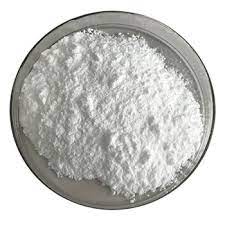Description
Isophthalic Acid: A Versatile Building Block in Polymers and Beyond
Isophthalic acid (IPA), with the chemical formula C₈H₆O₄, is an aromatic dicarboxylic acid, a structural isomer of phthalic acid and terephthalic acid. While often overshadowed by its more widely known siblings, IPA holds a significant position in the realm of polymer chemistry, offering unique properties and applications due to its distinct molecular structure.
Structural Character and Properties:
The key distinguishing feature of isophthalic acid is the meta-orientation of the two carboxyl groups (-COOH) attached to the benzene ring. This placement imparts specific characteristics compared to the ortho (phthalic acid) and para (terephthalic acid) isomers.
- Amorphous Nature: The meta-substitution hinders the formation of highly ordered, crystalline structures in polymers derived from IPA. This leads to more amorphous, less crystalline materials.
- Improved Solubility: Compared to terephthalic acid, IPA exhibits better solubility in certain solvents, making it easier to process and manipulate in various applications.
- Enhanced Flexibility and Impact Resistance: Polymers incorporating IPA generally possess improved flexibility, elongation, and impact resistance, making them suitable for applications where these properties are crucial.
Production and Manufacturing:
Isophthalic acid is primarily produced through the oxidation of meta-xylene, a process similar to the synthesis of terephthalic acid. The oxidation is typically carried out in the presence of a catalyst, such as cobalt or manganese salts, and in a solvent like acetic acid. Recent advancements have focused on improving the efficiency and sustainability of the oxidation process.
Key Applications:
Isophthalic acid serves as a crucial building block in the production of a variety of polymers and resins, contributing to their enhanced performance and versatility. Some of its prominent applications include:
- Unsaturated Polyester Resins (UPR): IPA is a vital component in UPR, which are widely used in the manufacturing of fiberglass-reinforced plastics (FRP). The incorporation of IPA improves the resin’s resistance to hydrolysis, chemical attack, and distortion at elevated temperatures. This makes IPA-modified UPR ideal for applications like boat hulls, automotive parts, and construction materials.
- Alkyd Resins: IPA is employed in the production of alkyd resins, a staple in the coatings industry. It enhances the flexibility, gloss retention, and durability of paints and coatings. These IPA-modified alkyds find applications in architectural coatings, industrial enamels, and automotive finishes.
- Polyester Polyols and Polyurethanes: IPA-based polyester polyols are used as intermediates in the production of polyurethane foams, elastomers, and coatings. They contribute to the flexibility, toughness, and chemical resistance of the final polyurethane products.
- Modified Polyethylene Terephthalate (PET): While terephthalic acid dominates PET production, incorporating a small amount of IPA can modify the polymer’s properties. This can improve the clarity and flexibility of PET films and containers, making them suitable for certain packaging applications.
- Other Applications: IPA also finds applications in the manufacturing of certain specialty polymers, adhesives, and plasticizers. Its use in the production of corrosion inhibitors and dyes is also noteworthy.
Advantages and Considerations:
The use of isophthalic acid in polymer synthesis offers several advantages:
- Improved performance: IPA enhances the chemical resistance, heat resistance, and mechanical properties of the resulting polymers.
- Versatility: Its ability to modify and tailor the properties of polymers makes it a versatile choice for various applications.
- Processability: The improved solubility of IPA compared to terephthalic acid can simplify the manufacturing process.
However, some considerations include the higher cost of IPA compared to terephthalic acid and the potential need for optimized formulations to achieve the desired balance of properties.
Future Trends:
The future of isophthalic acid is tied to the continued growth of the polymer industry and the increasing demand for high-performance materials. Research and development efforts are focusing on:
- Sustainable Production: Developing more environmentally friendly and sustainable methods for IPA production, including bio-based routes.
- Novel Applications: Exploring new applications for IPA-based polymers in emerging fields like renewable energy, biomedical engineering, and advanced composites.
- Performance Enhancement: Further optimizing the formulations and processes to maximize the benefits of IPA in polymer applications.
Conclusion:
Isophthalic acid, although not as ubiquitous as its isomer terephthalic acid, plays a crucial role in the polymer industry. Its unique structural characteristics contribute to the enhanced flexibility, chemical resistance, and performance of various polymers and resins. As the demand for high-performance materials continues to grow, isophthalic acid will remain a vital building block for numerous applications, paving the way for innovation and advancements in materials science. Its versatility and ability to tailor polymer properties ensure its continued relevance in shaping the future of polymer chemistry.



















Reviews
There are no reviews yet.